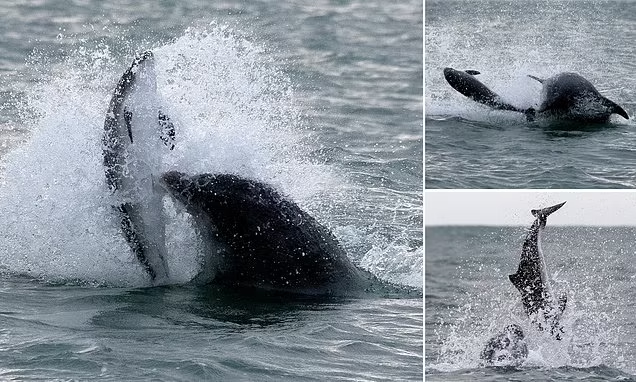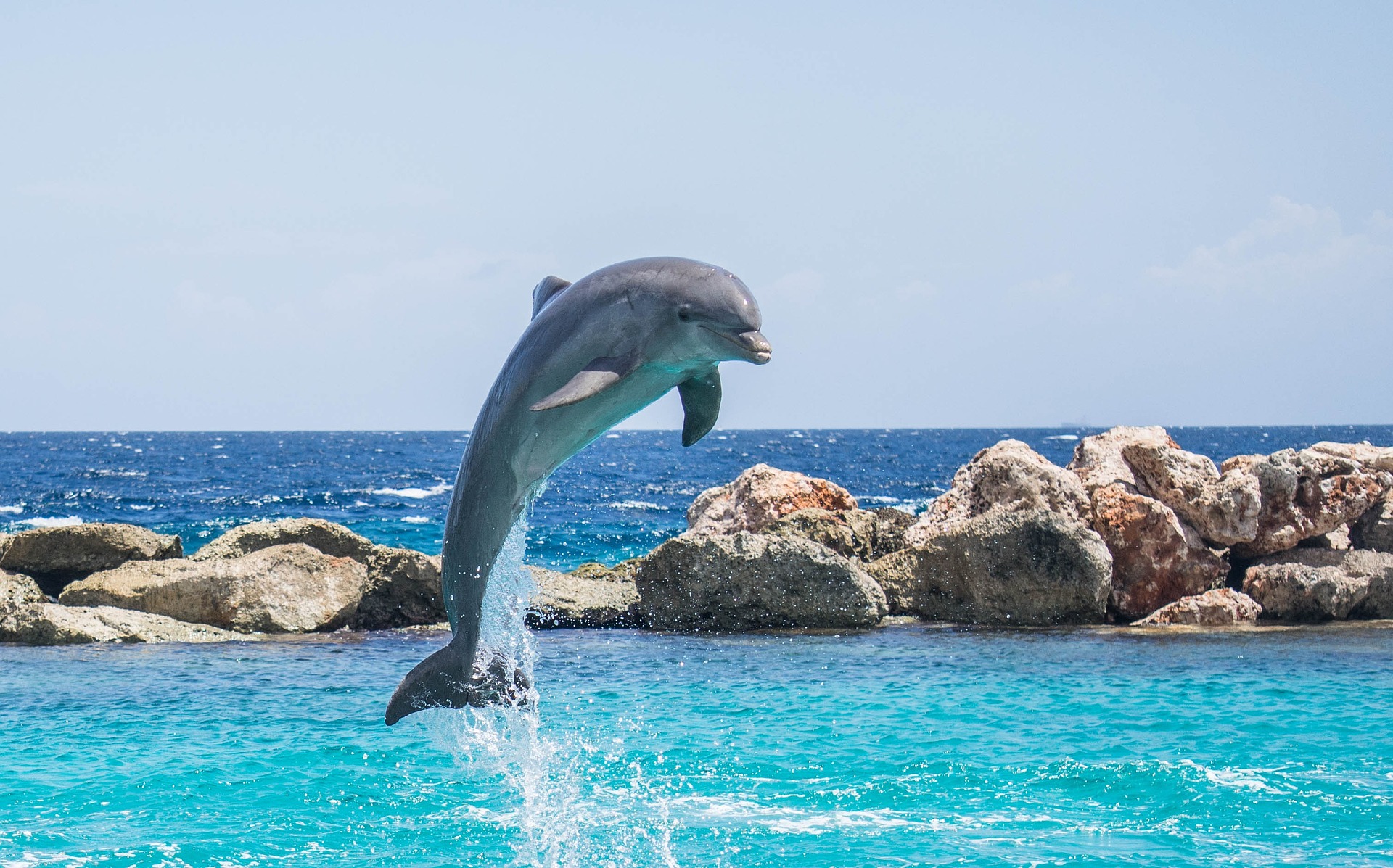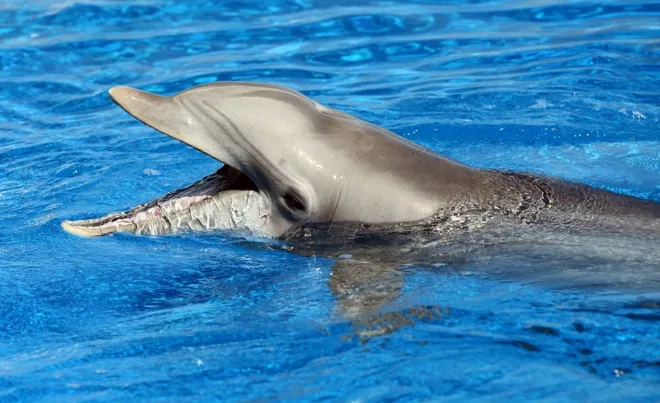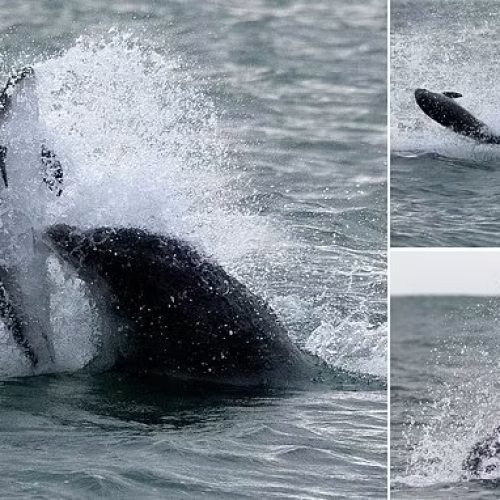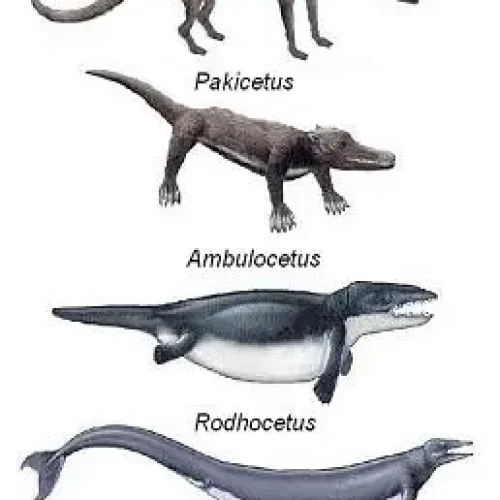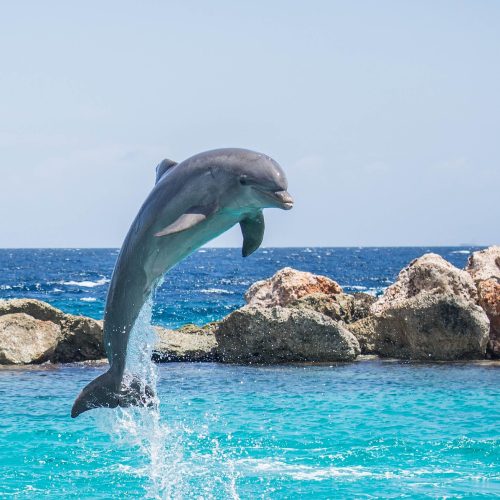In this article
VANISHING WAVES: THE ALARMING DECREASE IN DOLPHIN POPULATIONS
Dolphins, those intelligent and charismatic marine mammals, have long captured human imagination.
Yet, their numbers are dwindling at an alarming rate, raising concerns among marine biologists and conservationists worldwide.
Dolphins have been revered since antiquity, featuring prominently in Greek mythology as Apollo’s sacred animals and in Roman literature as symbols of intelligence and benevolence.
Ancient cave paintings and pottery depictions suggest their widespread presence in coastal waters across various civilizations.

While precise historical numbers are challenging to determine, marine ecologists estimate that dolphin populations were significantly larger before industrialization.
Historical records and archaeological findings indicate abundant dolphin presence in coastal waters worldwide, with some species numbering in the millions.
The decline in dolphin populations began accelerating in the mid-20th century, coinciding with increased industrial fishing, coastal development, and marine pollution.
The introduction of large-scale commercial fishing practices, particularly purse seine nets, led to substantial dolphin bycatch, marking a critical turning point in their population dynamics.
“Each year, an estimated 300,000 cetaceans, including dolphins, fall victim to fishing gear.”
CURRENT STATE OF AFFAIRS: A GLOBAL CENSUS OF DOLPHINS
Several dolphin species now teeter on the brink of extinction. The vaquita, a small porpoise found in the Gulf of California, is perhaps the most critically endangered with fewer than 10 individuals remaining.
The Maui dolphin, endemic to New Zealand, faces a similar fate with an estimated population of just 55 adults.
Regional variations: where populations are hit hardest
Dolphin populations have declined unevenly across the globe.
The Mediterranean Sea has seen a sharp decrease in common dolphin numbers, while the Yangtze River dolphin was declared functionally extinct in 2006.
In the Black Sea, harbour porpoises have declined by over 70% since the 1970s due to overfishing and habitat degradation.
Success stories: populations showing signs of recovery
Despite the grim overall picture, some dolphin populations are showing signs of recovery.
The bottlenose dolphin population in Sarasota Bay, Florida, has stabilized thanks to long-term conservation efforts.
In the Ganges River, the endangered Ganges river dolphin has seen a modest increase in numbers following targeted protection measures.
The global decline in dolphin populations is a complex issue intertwined with human activities, climate change, and ecosystem health.
While some conservation efforts have shown promise, much work remains to be done to ensure the survival of these remarkable creatures.
Understanding the historical context and current challenges is crucial for developing effective strategies to protect and restore dolphin populations worldwide.
HUMAN IMPACT: THE MAIN CULPRITS BEHIND DOLPHIN DECLINE
The global dolphin population has plummeted in recent decades, sparking concern among marine biologists and conservationists.
While these charismatic creatures have faced natural challenges for millions of years, human activities have dramatically accelerated their decline.
Let’s explore the primary factors driving this worrying trend.
Bycatch: The silent killer
Bycatch, the unintentional capture of non-target species, remains one of the most significant threats to dolphin populations worldwide.
Each year, an estimated 300,000 cetaceans, including dolphins, fall victim to fishing gear.
In France alone, over 6,000 dolphins are killed annually as bycatch in the Bay of Biscay, according to recent studies by the French National Center for Scientific Research (CNRS).
• Gillnets and purse seine nets are particularly lethal
• Some fishing methods indiscriminately trap dolphins along with target fish species
• Many dolphins drown before they can be released, even when discovered alive
Overfishing: Depleting food sources
The relentless pursuit of commercial fish stocks has severely impacted the marine food chain. As key prey species become scarce, dolphins face increased competition and potential starvation.
The Mediterranean Sea, once teeming with life, has seen a 34% decline in dolphin populations over the past 50 years, largely attributed to overfishing.
Ghost nets: A persistent threat
Abandoned or lost fishing gear, known as ghost nets, continues to entangle and kill marine life long after its intended use.
These silent traps drift through the oceans, indiscriminately catching dolphins and other creatures. French coastal clean-up initiatives have recovered over 3 tonnes of ghost nets in the past year alone, highlighting the scale of this problem.
Pollution: Poisoning the oceans
The ubiquity of plastic in our oceans poses a severe threat to dolphin health. Dolphins often mistake floating plastic for food, leading to:
• Intestinal blockages
• Malnutrition
• Internal injuries
A study by the University of Montpellier found microplastics in the digestive systems of 88% of stranded dolphins examined along the French Mediterranean coast.
Chemical contaminants: Invisible killers
Persistent organic pollutants (POPs) like PCBs and heavy metals accumulate in dolphin tissues through a process called biomagnification. These toxins can cause:
• Reproductive issues
• Immune system suppression
• Neurological problems
Alarmingly, some dolphin populations in European waters carry PCB levels up to 20 times higher than the threshold for negative health effects.
Noise pollution: Disrupting dolphin life
The increasing cacophony of human activity in the oceans severely impacts dolphin communication and navigation. Sources of harmful underwater noise include:
• Shipping traffic
• Offshore construction
• Seismic surveys for oil and gas exploration
Research conducted by the French Research Institute for Exploitation of the Sea (IFREMER) has shown that noise levels in the Mediterranean have doubled every decade since the 1960s, interfering with dolphin echolocation and social bonds.
The challenges facing global dolphin populations are complex and interconnected.
Addressing these issues requires a multifaceted approach, combining stricter fishing regulations, improved waste management, and noise reduction strategies.
Recent initiatives, such as the 2 million euro “Dolphin-Safe Mediterranean” project launched by the European Union, aim to tackle these threats comprehensively.
By understanding the human impact on these intelligent marine mammals, we can work towards ensuring their survival for generations to come.
CLIMATE CRISIS: A LOOMING THREAT TO DOLPHIN SURVIVAL
The climate crisis has emerged as a formidable threat to dolphin populations worldwide.
As ocean temperatures rise, these intelligent marine mammals face unprecedented challenges that test their adaptability and resilience.
Shifting prey distributions have forced dolphins to alter their hunting grounds. Fish species are migrating towards cooler waters, often beyond the dolphins’ traditional habitats.
This phenomenon has been observed in the Mediterranean, where common dolphins are venturing further north in search of sardines and anchovies.
Ocean acidification poses another significant threat. As the seas absorb more carbon dioxide, the water becomes more acidic, affecting the entire marine food web.
This change impacts the abundance of small fish and squid that dolphins rely on, potentially leading to malnutrition and reduced reproduction rates.
Extreme weather events, intensified by climate change, have increased the frequency of dolphin strandings.
Dolphins are demonstrating remarkable behavioral adaptations in response to these environmental shifts. Researchers have noted changes in migration patterns among several species.
For instance, bottlenose dolphins in the English Channel have been observed traveling further north than ever before, reaching as far as the Scottish coast.
However, physiological challenges persist as dolphins struggle to cope with warmer waters. Higher temperatures can lead to heat stress, particularly in species adapted to cooler climates.
This stress can compromise their immune systems, making them more susceptible to diseases and parasites.
The rapid pace of climate change also raises concerns about genetic bottlenecks. As dolphin populations decline and become isolated, their genetic diversity diminishes.
This reduction in genetic variability could limit their ability to adapt to future environmental changes, potentially leaving entire populations vulnerable to extinction.
• Some dolphin species are showing signs of adaptation:
– Changes in hunting techniques to target new prey species
– Shifts in social structures to accommodate new habitats
– Alterations in vocalizations to communicate in noisier environments
• However, these adaptations may not be enough to counteract the rapid pace of climate change:
– Reduced calving rates observed in warmer waters
– Increased competition with other marine predators for limited resources
– Higher susceptibility to emerging diseases in stressed populations
The climate crisis presents a complex challenge for dolphin conservation. While these remarkable creatures have demonstrated some capacity to adapt, the rate of environmental change may be outpacing their evolutionary capabilities.
Conservation efforts must now focus on mitigating the impacts of climate change while simultaneously protecting critical habitats and reducing other anthropogenic threats.

